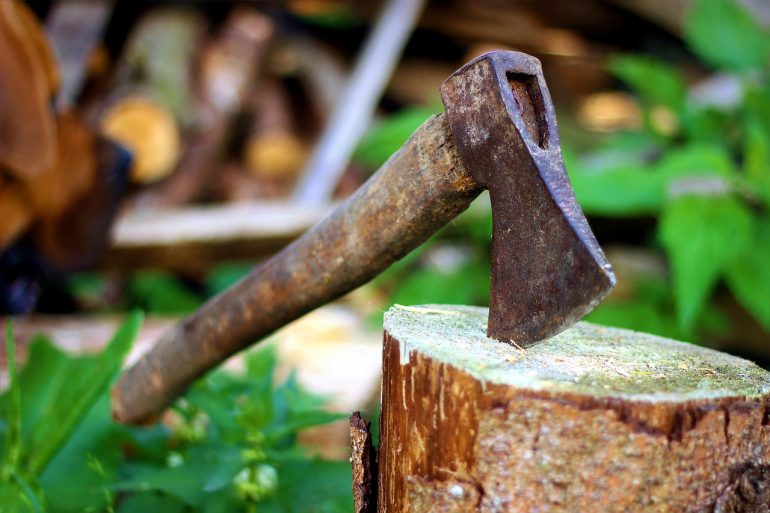For almost any chopping discipline in the STIHL® TIMBERSPORTS® Series, a rival cuts countless practice logs to make sure these are generally presenting the axe properly and efficiently. In the end of that planning, there’s another important bit of the chopping equation; exactly what axe to utilize.
Even though the axes may look the same on everyday observer – wooden handle with shiny steel-head – they truly are completely different. That’s why for three chopping disciplines inside Series, a competition may deliver six to 10 different axes into the competition while owning another dozen, or up to a couple of hundred, according to the competition and where they travel. Therefore, what exactly is in fact different amongst the different axes?
Axe Source
The axes utilized on the Series cannot be removed the rack at your local equipment shop. They’re purpose-built, racing-tuned axes meant to reduce fresh, smooth, knot-free timber in a racing environment. Most of the axes originate from the Mecca woodchopping in Australia and brand new Zealand – either Brute Forge or Tuatahi. Despite being halfway internationally, both organizations do make and send axes toward United States. For those who have the $500 or even more per head and some months to wait patiently, you too can have a chopping axe.
Axe Grind
Axes additionally vary both in the grind from the face associated with axe as well as the complete depth of axe mind. According to lumber species and cutting event, rivals choose a new routine from the standard Chisel, that can easily be brief, measuring 1/4 inch-long, or periodically measuring several inch deep from the axe face. The more complicated Supergrind may consist of different size chisels along with different depths for the 2nd bust in axe. Within these grinds, the axes could be thicker or thinner assessed from the sharpened edge, sometimes as slim as 13 levels or less so when dense as 17 or 18 levels on an axe utilized in harder lumber.
The axe grinds are applied by a skilled axe finisher that has a dish of routine and total width when it comes to preferred timber species. Making use of grinders, belt sanders, rocks, and calculating guides, axe grinders simply take a blank steel head and change it into a “cutting machine” – an axe that cuts deeply into the log and does not stick. This information is generally held relatively firmly closed and learned though many years of viewing, modifying and careful evaluating.
After the routine while the width are chosen, the final part of the cutting equation could be the innovative. Depending on lumber species becoming sliced, an axe could have a finely stoned, diamond stoned or filed side. It’s not uncommon to see competitors testing axes in formerly sliced obstructs or their particular underhand chopping block footholds then modifying the edge of the axe with a stone they pull from their pocket. The rock is slid regarding distance for the axe head side at various perspectives to smooth, lengthen or shorten the innovative of the axe. This work integrates to make a five to seven-pound razor knife might shave down a competitor’s whiskers if it gets also near their face.
Axe Size
To successfully compete within the Series, a competition must utilize his axes to slice in three various activities, of three various logs in three different settings. Standing on a springboard very nearly seven feet in the air frequently calls for an inferior, less heavy axe than when standing easily regarding the underhand wood or regarding the stage during a standing block cut. Axe dimensions selection is fundamentally competitor option based on what the person is more comfortable with. This might change from axes no more than seven inches wide, or narrower, and seven inches or less deep into the springboard, to axes into the eight inch and eight ins deep in a choice of the standing block or even the underhand.
Handles
an often underappreciated but priceless component of the chopping equation could be the axe handle. Minus the handle, the axe is just a really sharp paperweight. Form and duration of the handle is up to each competitor, some selecting thinner or narrower manages after which trying to make the form even among all of their different chopping axes. As well as suiting the handle into competitor, the rival must spending some time installing the axe handle to your mind. Making use of a farrier’s rasp, the termination of the handle that goes in the axe is shaved down and driven to the axe mind before a wedge and safety-pin tend to be put in to help keep the axe mind secured from the handle. Care is taken to directly align the bit of the axe with all the handle. If this is maybe not done correctly and carefully, a perfectly great, sharp axe, wont reduce effortlessly.
Between your various chopping disciplines and different wood species, a competition needs to hold their stable of axes well stocked with different grinds and sizes. This is why it’s not uncommon to see a competitor bring various containers of axes before a contest, and constantly fibbing a bit in regards to the final number he’s got saved yourself.

Image by Jan Steiner from Pixabay
Source: www.stihlusa.com
